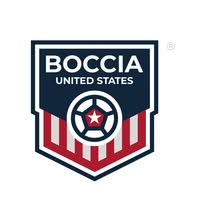“In 2019, the World Boccia Development Committee ratified a shot-type terminology update that has been introduced across the sport of Boccia. The language change is in aid of creating an internationally known sporting terminology that is uniform and recognizable around the world. It is of importance that coaches and all those who deliver boccia, are knowledgeable of the terminology and their outcomes on the court.” – https://www.youtube.com/watch?v=NQwhQFhO9_o
Self Classification Tool & LINK (new version coming soon)
Please use this self assessing decision tool to provide an initial guide as to WHICH probable Boccia Class Category you may be assessed into. This is ONLY an informal tool. A Formal Assessment can only be conducted by USA Boccia as formal events.
For International Competitions including the Paralympics, only the USOPC or designees can officially conduct and classify athletes.
Classifications
For competition purposes, athletes are classified according to their disability into classifications or order to provide a level playing field of competition.
BC1
Players in this class throw the ball with the hand or foot. They may compete with an assistant who stays outside of the competitor’s playing box, to stabilize or adjust their playing chair and give the ball to the player when requested.
BC2
Players in this class throw the ball with the hand. They are not eligible for assistance.
BC3
Players in this class have very severe locomotor dysfunction in all four extremities. Players in this class have no sustained grasp or release action and although they may have arm movement, they have insufficient range of movement to propel a Boccia ball onto the court. They may use an assistive device such as a ramp to deliver the ball. They may compete with an assistant; assistants must keep their back to the court and their eyes averted from play.
BC4
Players in this class have severe locomotor dysfunction of all four extremities as well as poor trunk control. They can demonstrate sufficient dexterity to throw the ball onto the court. Players are not eligible for assistance.
BC5
These are players with less impairment than a BC2 or BC4. For conditions of both Cerebral and Non Cerebral origin
Cerebral: Quadriplegic, Triplegic, Severe Hemiplegic.
Non Cerebral: impairment may result from lack of muscle strength, limitation in range of movement or limb shortening
May use either a manual or power wheelchair. May be able to walk with assistance or using a walking aid over short distances. Has a more active throw as a result of increased trunk control and/or upper limb muscle strength. BC5 athletes may compete in any competition that offers a BC5 division but are not eligible for competitions outside of United States.
BC6 or OPEN
For athletes who have a disability but do not qualify for the BC1-5 classifications, there is an Open classification available for domestic events only. Open athletes may compete in any competition that offers an open division but are not eligible for competitions outside of United States.
BC7
The BC7 category is played seated by individuals with visual impairments. A tactile board is used in conjunction with auditory cues.
BC8
The BC8 category is played seated by individuals with an intellectual disability.
BC9
This BC9 category can be added for community members without any disability who are 55+ and would like to play boccia while seated.
International BISFED Boccia Classification Rules:
These International Classification rules apply mainly to the BC1-BC4 categories but may also be used in whole or part for BC5 and
above categories too.






